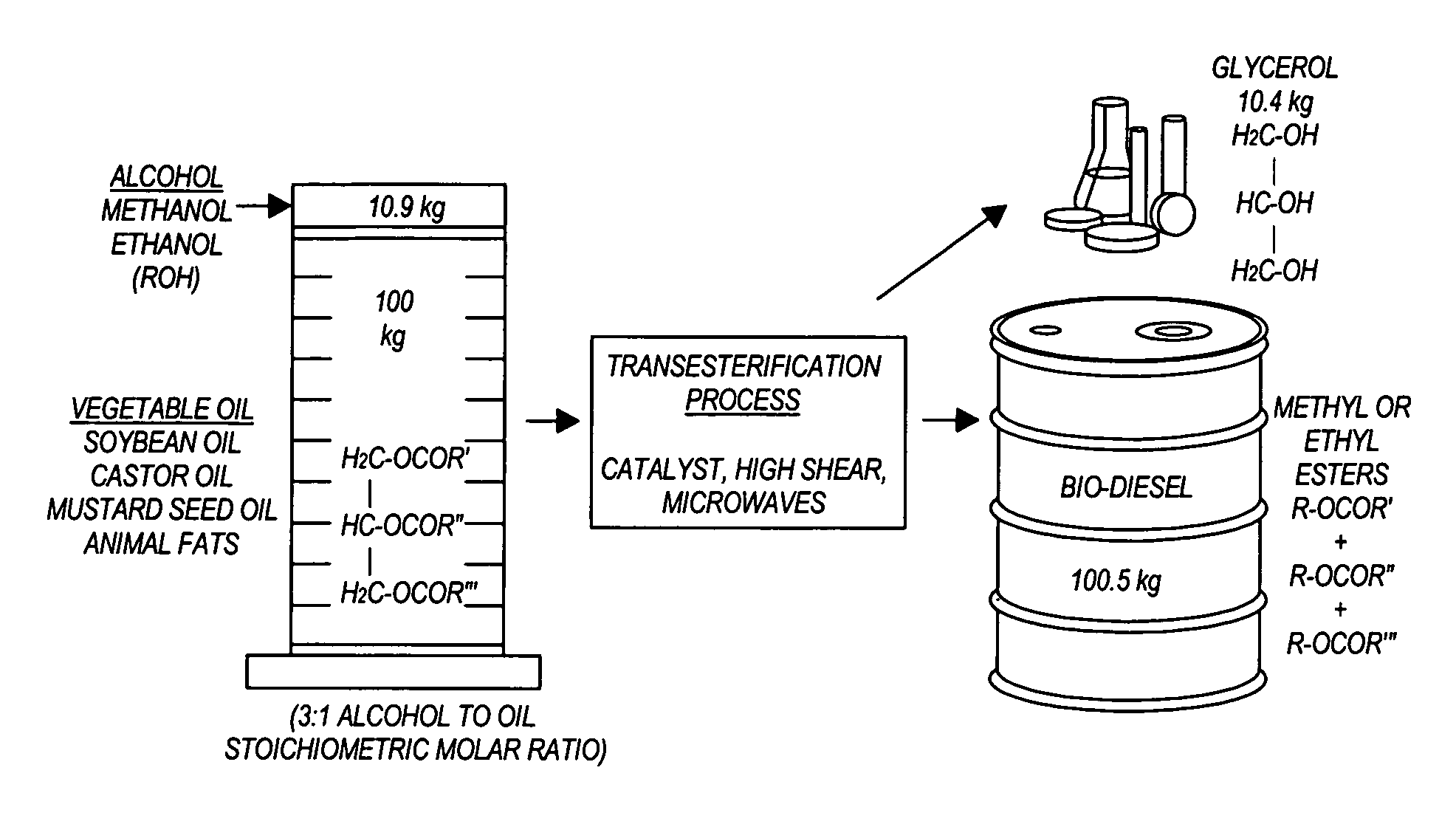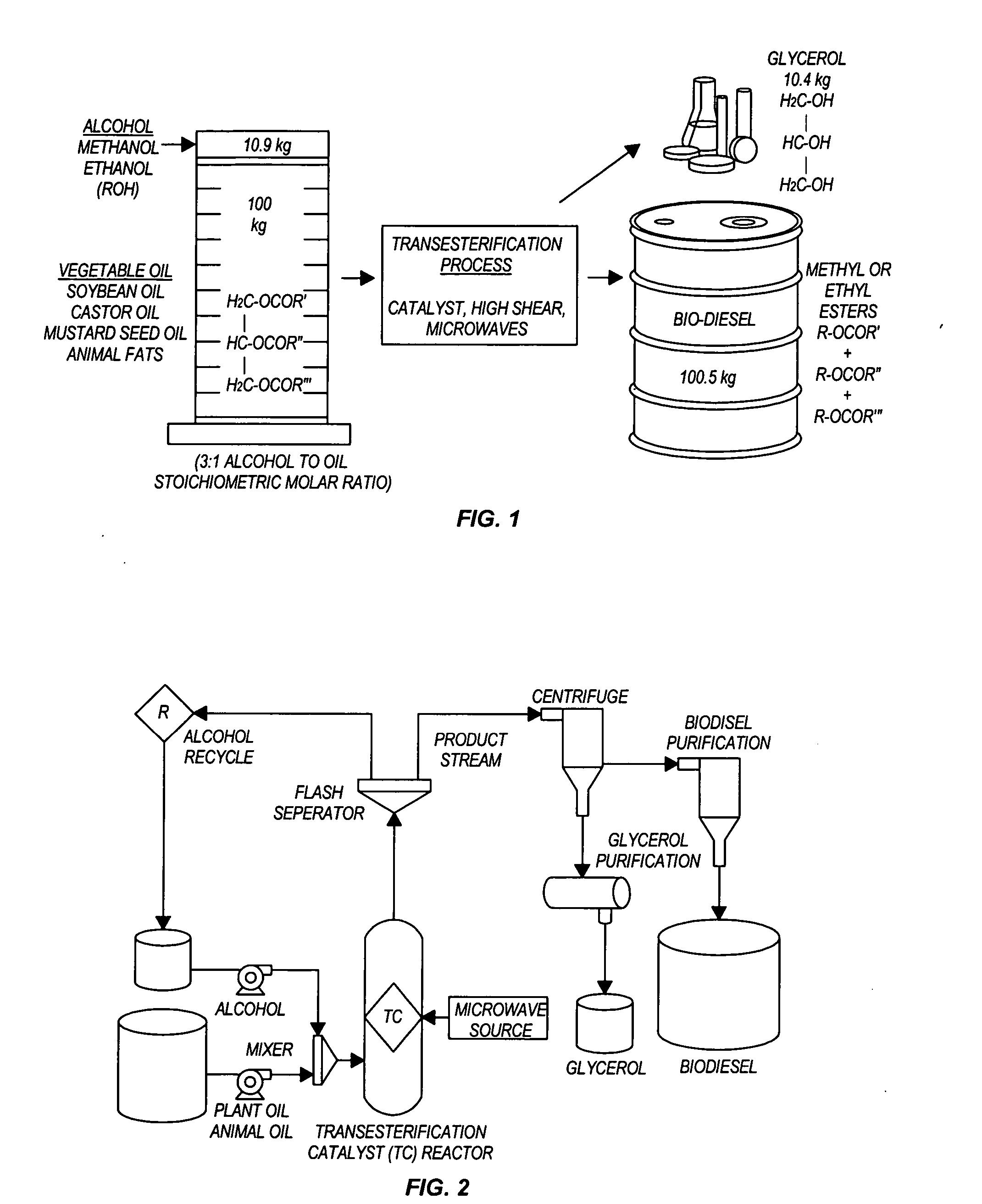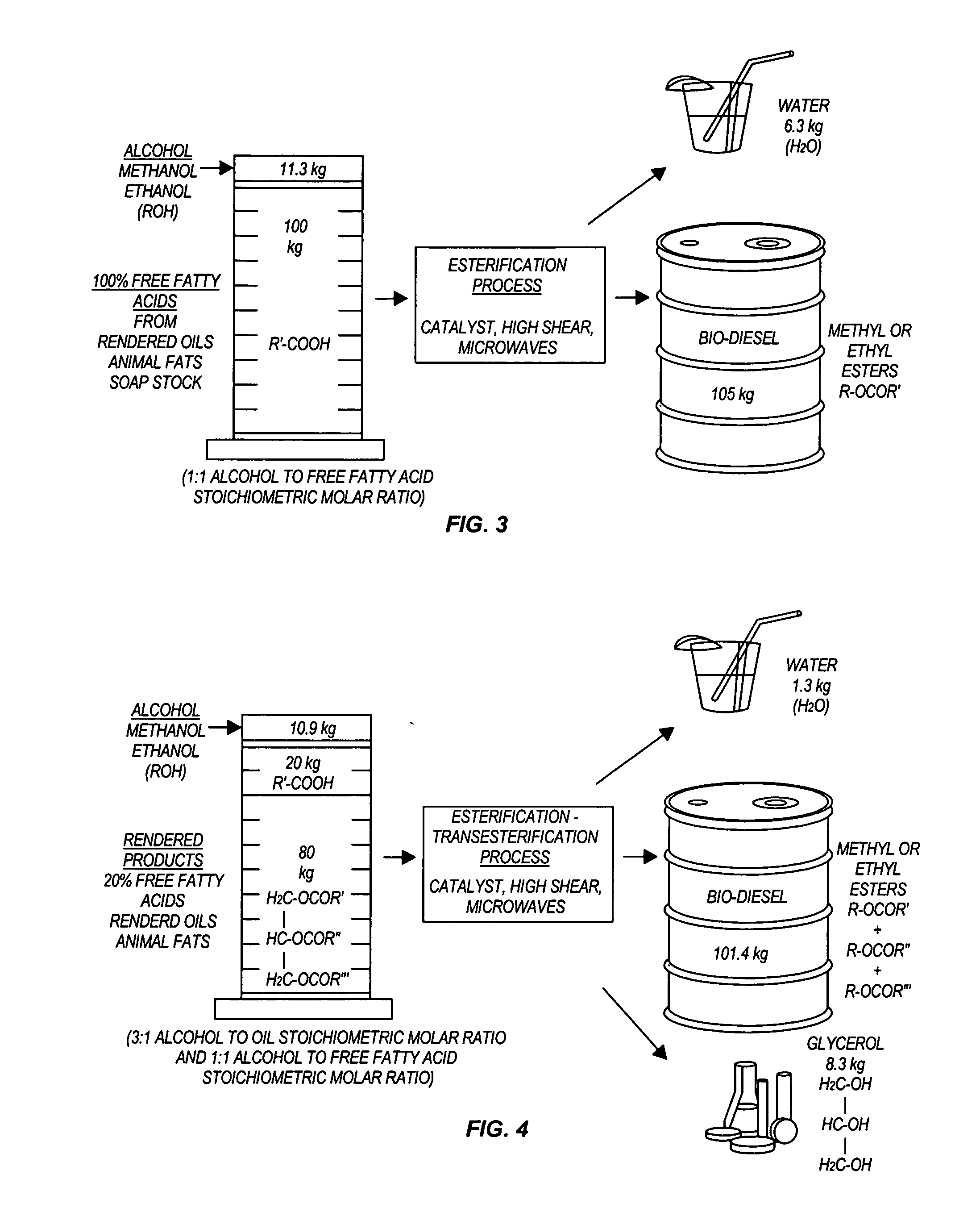Methods for producing biodiesel
a biodiesel and biofuel technology, applied in biofuels, fatty acid chemical modification, fuels, etc., can solve the problems of destroying the carbon deposits of the engine, plant oil properties, animal oil properties, etc., and not being a direct replacement for petroleum diesel in the diesel engine of today
- Summary
- Abstract
- Description
- Claims
- Application Information
AI Technical Summary
Benefits of technology
Problems solved by technology
Method used
Image
Examples
example 1
Effect of Increasing Feed Velocity, with Fixed Bed Reactor, on Alkaline Heterogeneous Transesterification
[0094] A fixed bed reactor was set up to operate with microwave power as shown in FIG. 6. The illustrated system includes a cylinder, a high-shear gear pump, and a return line that maintain the reactants as a mixed emulsion. The reactants are maintained as an emulsion by passing the reactants through the high shear gear pump at ambient temperature and pressure and returning the emulsion to the holding cylinder.
[0095] A valve V2, a second pump, and a backpressure regulator control the flow rate of the emulsified reactants through the catalyst bed, contained in the microwave flow-through reactor system. The microwave generating system comprises a 0 through 25 Watt microwave source (Sairem, GMM.25.2450), power meter (Anritsu, ML2438A), BNC to WR284 waveguide adapter (Lectronic Research Labs), EH tuner (FXR Inc, S312B), dual directional coupler (Mac, 31145B-50), and associated micr...
example 2
Demonstration of Heterogeneous Transesterification
[0107] Using the CSB system described in FIG. 7, 10 cc of heterogeneous base catalyst, namely, sodium silicate catalyst was placed into the reactor. The feed was soybean oil mixed with methanol (Acros, UN1230) in a 6:1 molar ratio. A charge of 300 cc was used. The operating temperature was 60° C. and the pressure was 50 psig above autogeneous conditions. The velocity ranged from 0.26 and 0.31 m / s. 10 watts of microwave power (1 W / cc) was applied to the catalyst bed as the feed / product mixture flowed. After 30 minutes a sample was collected and centrifuged. The top layer was then analyzed using the GC.
[0108]FIG. 8 presents the GC plots of the feed soybean oil and the microwave process product, which is biodiesel. The GC indicated 100% conversion of the soybean oil triglycerides.
example 3
Effect of High Feed Velocity and Heterogeneous Catalyst on Heterogeneous Transesterification
[0109] Using the CSB system illustrated in FIG. 7, 10 cc of heterogeneous base catalyst (sodium silicate) was placed into the reactor. A 4:1 (molar) methanol to soybean oil (SBO) mixture feed was used. The operating temperature was 80° C.
[0110]FIG. 9 shows the TG conversion as a function of time. The graph shows that as the velocity increased from 0.052 m / s (Test 1) to 0.208 mi / s (Test 2), the rate of conversion increased. The TG conversion more than doubled from 45% at 0.052 m / s to 100% at 0.208 m / s at 30 minutes or a LHSV of 60. This data also demonstrates that, contrary to the prior art; lower methanol to SBO ratios can be used to obtain 100% conversion with a heterogeneous base catalyst.
PUM
| Property | Measurement | Unit |
|---|---|---|
| Fraction | aaaaa | aaaaa |
| Fraction | aaaaa | aaaaa |
| Pressure | aaaaa | aaaaa |
Abstract
Description
Claims
Application Information
 Login to View More
Login to View More - R&D
- Intellectual Property
- Life Sciences
- Materials
- Tech Scout
- Unparalleled Data Quality
- Higher Quality Content
- 60% Fewer Hallucinations
Browse by: Latest US Patents, China's latest patents, Technical Efficacy Thesaurus, Application Domain, Technology Topic, Popular Technical Reports.
© 2025 PatSnap. All rights reserved.Legal|Privacy policy|Modern Slavery Act Transparency Statement|Sitemap|About US| Contact US: help@patsnap.com



